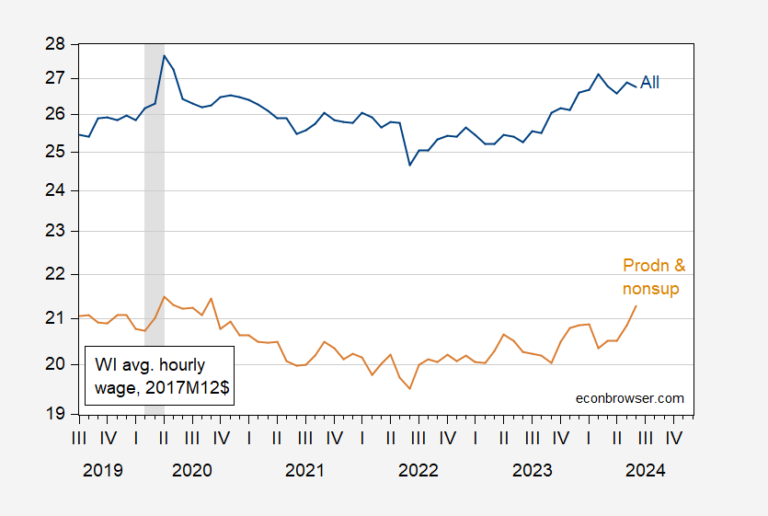For all private sector workers, as well as production workers and non-managers:
Figure 1: Wisconsin average hourly wages for all private sector workers, in 2017-2012 dollars (blue), for production workers and nonsupervisory workers (beige). Uses the CPI for the Northeast Central/Midwest, seasonally adjusted by the author using X-13 (log transformation). NBER-defined peak-to-trough recession dates are shaded. Source: BLS and author’s calculations.
Figure 2: Annual growth rate of Wisconsin average hourly wages for all private sector workers (blue), production workers, and nonsupervisory workers (beige). Uses CPI for the Northeast/Midwest, seasonally adjusted by the author using X-13 (log transformation). Growth rates using 12-month logarithmic differences. NBER-defined peak-to-trough recession dates are shaded. Source: BLS and author’s calculations.
Thus, with the rise in real wages and strong employment growthWisconsin appears to be in good economic shape, a perception that is reflected in the polls, overall.
Figure 3: Percentage of voters likely to answer the question “How would you describe the current state of Wisconsin’s economy?” Source: Marquette Law School Survey.





